Royal Canines
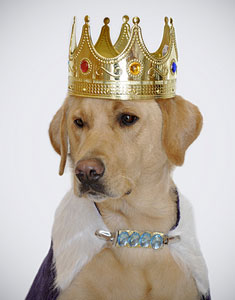
If you've spent any time at all studying the British Royal Family, you probably know they've been big fans of dogs for centuries. In fact, Her Royal Majesty Queen Elizabeth II has a gallery of portraits showing royals and their dogs as far back as 1635, when two Cavalier King Charles Spaniels were painted into a portrait called "The Three Eldest Children of Charles I" by Sir Anthony Van Dyck.
King Charles II is known to have bred spaniels starting as early as the 1660s. One of his legacies is the breed now known as the Cavalier King Charles Spaniel. He was also responsible for a law that allowed dogs into any public place. The first Duke of Marlborough further refined the royal line of Cavalier King Charles Spaniels in the mid-18th Century, establishing the Blenheim line.
The Victorian Era
After Queen Victoria and Prince Albert were married in 1840, a painting known as "Windsor Castle in Modern Times" was commissioned. Artist Sir Edwin Landseer included not only the Queen and Prince, but also the infant Victoria, known as the Princess Royal, and four of the family's dogs: Eos, Islay, Cairnach, and Dandie Dinmont.
None of the dogs in the portrait appears to be a Collie, but Queen Victoria is said to have been particularly attached to Noble, a Collie who died at Balmoral in 1887. His gravestone was inscribed,
"Noble by name by nature noble too
Faithful companion sympathetic true
His remains are interred here."
Another favorite of Queen Victoria was her childhood Cavalier King Charles Spaniel, Dash. He was memorialized in a portrait by Sir Edwin Landseer (circa 1836). When Dash went to his final resting place, Queen Victoria had his tombstone inscribed,
"Here lies Dash the favorite spaniel of Her Majesty Queen Victoria,
By whose command this Memorial was erected.
He dies on the 20th December 1840, in his 9th year.
His attachment was without selfishness,
His playfulness without malice,
His fidelity without deceit.
Reader, if you would live beloved and die regretted, profit by the example of Dash."
As a small child, King Edward VIII was captured in a sweet portrait with a black standard poodle named Sammy. Another photo shows Sammy balancing on the backs of two chairs, holding a stick in his mouth. (Scroll down the linked page to see the correct photo, but don't miss the photos of the other royal canines on the way.) Unfortunately, Sammy later met an untimely death after accidentally eating rat poison.
A photo of a young King George V (in 1815, when he was merely the Duke of York) shows him holding a pug decked out in a hat a scarf. This photo graces the cover of the book Noble Hounds and Dear Companions, Link to http://www.royalcollection.org.uk/default.asp?action=article&ID=522 by Sophie Gordon, the Curator of the Royal Photograph Collection.
Edward VIII's grandfather, King Edward VII was terribly fond of his terrier Casear. The King had the dog's gem-encrusted collar inscribed, "I am Caesar. I belong to the King." In addition, a Faberge sculpture was created to honor the dog. It is part of the Faberge collection housed at Sandringham.
The Royal Kennels at Sandringham
Sandringham is a very appropriate place to keep the sculpture, as King Edward VII was the one who established Sandringham Kennels in 1879. The Royal Kennel is still an on-going enterprise, and breeders working at the kennels have produced numerous Field Trial Champions, as well as working dogs used for hunting on the many Royal Estates throughout the United Kingdom.
When Edward VII passed on to the great castle in the sky in 1910, his beloved dog Caesar was a part of the funeral procession.
Where do Royal Canines come from?
Edward VII's queen, Alexandra, was known for her eclectic taste in canines, having acquired Japanese Chins, Papillons, Pekingese, and Borzois. The latter were introduced to Sandringham as a gift from Tsar Alexander III of Russia, who gave Vassilka and Alex to the Queen. Vassilka was the subject of a silver Faberge sculpture which is also part of the Royal Collection at Sandringham.
Queen Victoria is said to be responsible for the one-time popularity of Pomeranians in England. She brought a Pom named Marco home from an 1888 visit to Italy, and the Royal Kennels at Sandringham had as many as 35 Poms at one time. Six of these toy dogs were shown at the 1891 Crufts show. Turi, one of Queen Victoria's favorites, was said to have been at the Queen's side when she died.
Many dogs ended up as part of the Royal Family as gifts. Quarry, a Russian dog, was given to Queen Victoria by British troops who had suffered near annihilation from Russian gunners at the Quarries in Redan during the Crimean War. German Chancellor Otto Von Bismarck gave a Samoyed to King Edward VII.
Prince Leopold, Queen Victoria's son, once adopted a dog named Skippy from the Battersea Dog Home. This is the same shelter that was rumored to have been the beneficiary of a £5 donation from Queen Victoria after she had made a similar donation in support of famine relief during Ireland's great potato famine. (These rumors were later proved false, as the Queen had in fact donated £2000 to Ireland.)
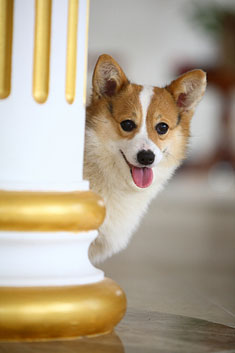
Queen Elizabeth II and beyond
King George VI may be the person most responsible for the current Queen's fascination with Corgis. He bought a Pembroke Corgi named Dookie at a local kennel and brought it home in 1933 for his daughters, the Princesses Elizabeth and Margaret. Later, Jane was added to the family, and two of Jane's puppies (Crackers and Carol) were kept by the family.
When Queen Elizabeth turned 18, she was given a Corgi named Susan, who was subsequently bred to produce more royal canines. Most, if not all, of the Queen's Corgis throughout the years have been descendants of Susan.
At one point, the Corgis were cross-bred with Princess Margaret's Dachshunds to create Dorgis. The Queen's current menagerie includes Corgis Linnet, Monty, Willow, and Holly, as well as Dorgies Cider, Candy, and Vulcan. It is said she cares for them herself, as much as her official schedule allows. (Somehow I have trouble imagining her getting woken up and jumped on at 2 am when a thunderstorm brews over Buckingham Palace.)
The Queen continues to name all of the puppies born at Sandringham Kennels. When the puppies are registered with the Kennel Club (as all of them are), their official names all begin with "Sandringham," identifying their royal roots. One of the most famous dogs to have been born and trained at the Royal Kennels is Sandringham Sydney, who ran in the Field Championships five times.
More recent generations of Royals have continued the family's love affair with dogs. Prince Charles at one time had several Labradors, but these days he makes his home with two Jack Russell Terriers named Tosca and Rosie, favorites of his wife Camilla, Duchess of Cornwall.
The newlyweds, Prince William and Princess Catherine recently experienced dog trouble just like the rest of us do when Otto, Princess Catherine's black Cocker Spaniel, ate a pair of pearl earrings given to her by the Prince. No word on whether or not the earrings were ever retrieved.
Doggies Den: Latest Articles
 Homemade Thanksgiving Treats for Your Dog
Homemade Thanksgiving Treats for Your Dog
NUTRITION We all want to include our dogs in our holiday celebrations, but hopefully, you're aware that sharing table scraps with your dog isn't always the best idea.
 Keeping Your Dog Safe during the Summer Months
Keeping Your Dog Safe during the Summer Months
HEALTH Summer is coming on fast, so it’s time to plan how you will keep your dog safe and healthy through the lazy, carefree, warm days.
 Vaccination Time Again-Keeping Your Puppy Healthy
Vaccination Time Again-Keeping Your Puppy Healthy
DOG HEALTH So you have your new puppy picked out. There are quite a few shots, treatments and examinations that will keep the newest member of your family healthy.
 Canine Thanksgiving Feast
Canine Thanksgiving Feast
NUTRITION With the wide variety of food at Thanksgiving dinner, chances are you'll want to give your dog something special, too. If you're contemplating what to feed your dog for the holiday, here is a guide to a great Canine Thanksgiving Feast.
 Dog Walking Tips Every Owner Should Know
Dog Walking Tips Every Owner Should Know
DOG FUN Walking your dog is not only crucial to keeping him healthy and happy, it strengthens the bond between your canine friend and his caregiver. There are a lot of obstacles out there. Don’t forget these simple tips to keep your walk fun and safe in the outside world.
 The Benefits of Physiotherapy for your Dog
The Benefits of Physiotherapy for your Dog
HEALTH The same techniques that physiotherapists use to treat a variety of injuries and conditions in humans have been adapted to suit animals with great success. Family pets, show dogs, and working dogs can all benefit greatly from physiotherapy. Dogs whose activities involve a lot of agility are especially susceptible to the types of problems that physiotherapy can address.
 The Decision- Adding a Dog to Your Family
The Decision- Adding a Dog to Your Family
FIRST TIME OWNERSBringing a dog into your family is a decision where many people don’t realize it’s magnitude until after they have the dog. There are a number of things that you need to research before you decide to purchase a dog, and it starts right in your own home.
 Bringing Your Dog Into Your New Baby's Life
Bringing Your Dog Into Your New Baby's Life
HEALTH Many believe that a dog and a new baby cannot happily coexist, so therefore the dog has to go. This is not necessarily the case.  A new baby does not mean you have to abandon your dog.

Doggies Den:
Most Popular Articles

Dog Pregnancy Symptoms
HEALTHIf you suspect your dog might be pregnant, check out part one in this series on pregnant dogs, where we cover pregnant dog symptoms.
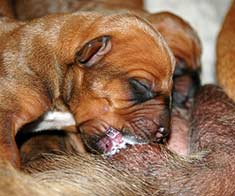
Dog Birth
HEALTHIn the third article of our dog pregnancy series, we look at the wonderful, but messy, process of bringing newborn puppies into the world.

Indoor Dog Potties
DOG PRODUCTSIt's been a long day at work. You were so busy, you didn't even take time to eat a sandwich, let alone run home to let your dog out. You're on your way home, knowing the poor dog is crossing his or her legs by now, when your car breaks down, delaying you even further. Can't somebody make this easier?
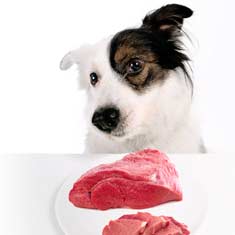
Your Dog’s Digestive System
PHYSIOLOGYEver wonder why your dog eats so fast? Or why he eats gross things? Or why he gets sick to his stomach? Or why his waste stinks so bad? Some of these things are normal, some are not.

Canine Respiratory System
BREATHINGThe basic function of your dog's respiratory system is to bring oxygen in to and remove carbon dioxide from the body. Knowing the symptoms of respiratory diseases can help you help your stay healthy.
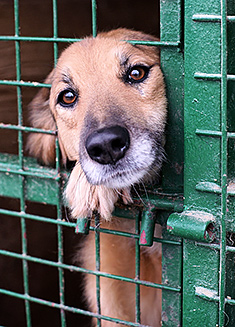
Shelter Dog Adoption Tips for Success
ADOPTION Are you intimidated by the prospect of "rescuing" a dog from a shelter? One reason that you may be wary of adopting a dog from a shelter is not knowing how to choose. Adopting a dog from a shelter can be a rewarding process, if you're prepared to do a reasonable amount of research.

Canine Urinary Tract Infections
SYMPTOMS AND TREATMENTDoes your dog seem to be having trouble relieving his or her bladder? Learn how to recognize the signs of urinary tract infections and how to treat them before they spread.

What to do for Dog Diarrhea
SYMPTOMS AND REMEDIESIf you have dogs in your house for any length of time, you have likely experienced at least one bout of dog diarrhea. Beyond the pain in the tuckus involved in cleaning up the mess, you should know what causes diarrhea, and when it's important to see the vet.
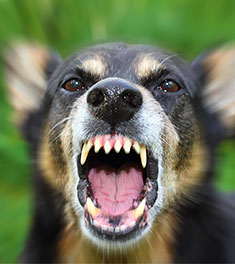
What to do for a Dog Bite
DOG BEHAVIOR Getting bitten by a dog can be scary, and you may be tempted to run around in circles for a while, trying to figure out what to do. Here's our guide to help you manage the situation.

Top Ten Tips for Living with a Senior Dog
DOG HEALTH Bringing home a new puppy is so exciting, but it doesn’t take all that long for your exuberant puppy to grow into a senior dog who may have special needs. Here are the doggies.com top ten tips for taking care of your companion who has been with you through so much.
